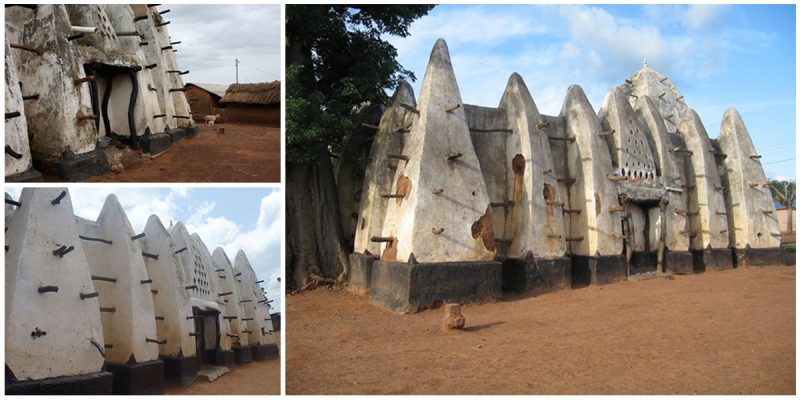Believed to have been built by Moorish traders during the time of the trans-Saharan trade in the 13th century, Larabanga is Ghana’s oldest Mosque, and one of the country’s most revered religious sites.
It is one of only eight mosques in the country built in this manner and has long been a pilgrimage site for Ghana’s Muslim population.
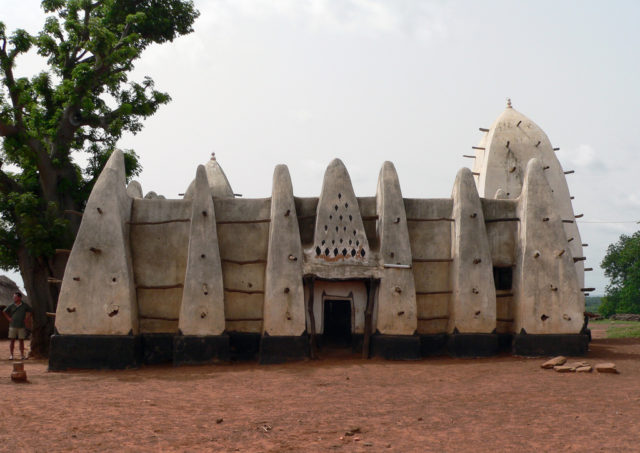
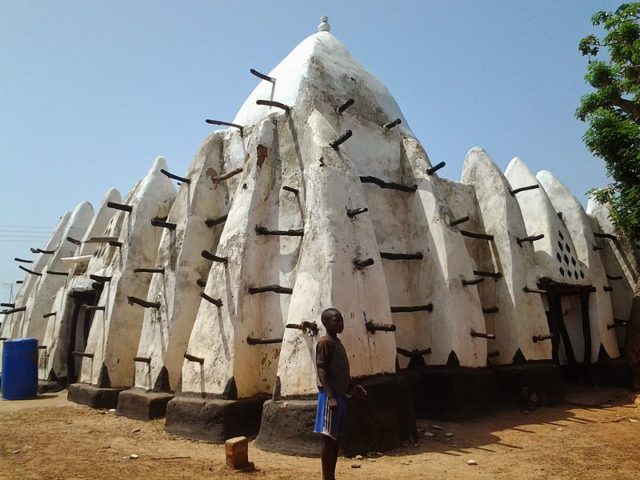
Referred to as the “Mecca of West Africa”, the Mosque was built with mud and reeds, and has two tall towers in a pyramid shape, one for the mihrab which faces towards Mecca, forming the facade on the east, and the other as a minaret in the northeast corner.
These are buttressed by twelve bulbous shaped structures, which are fitted with timber elements. The Mosque has four entrances, one each for the village chief, men, women, and the muezzin, who leads the azan or prayer call.
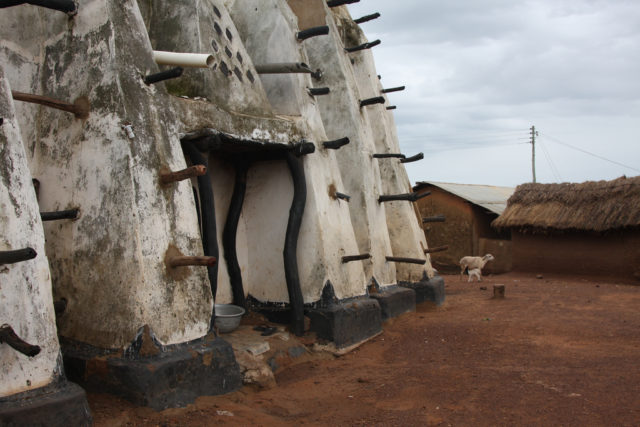
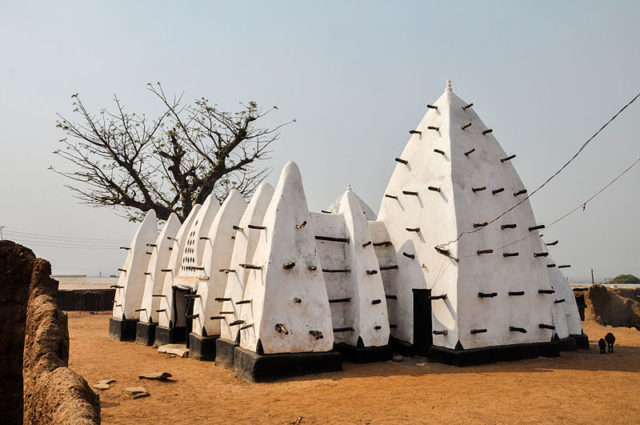
According to a legend, an Islamic trader named Ayuba was passing through the area, discovered a mystical stone, and while standing next to it decided to throw his spear into the air and sleep where it landed.
While sleeping he had a vision instructing him to build a mosque, and the following morning when he awoke, he found that the foundations were already in place. Seeing this as a sign from Allah, he proceeded to complete the construction of the Mosque.
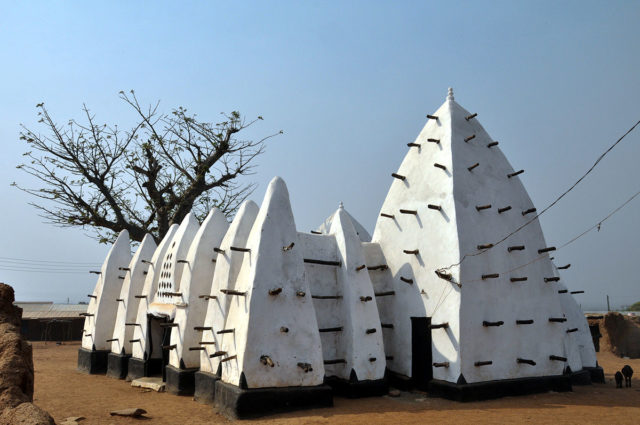
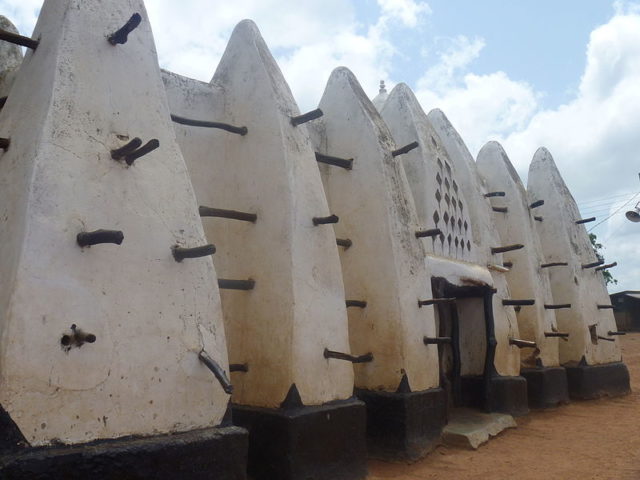
Even the present generation think the Larabanga was built by God, and so villagers have built an alternative Mosque in which it is acceptable for them to pray or worship daily.
An old Quran resides within the Larabanga Mosque, believed by the locals to have been given as a gift from heaven in the 17th century to Yidan Barimah Bramah, the Imam at the time, as a result of his prayers. It is also believed that Ayuba’s remains are buried under a baobab tree next to the mosque, and at a point in the year, they eat the leaves that grow on this tree.
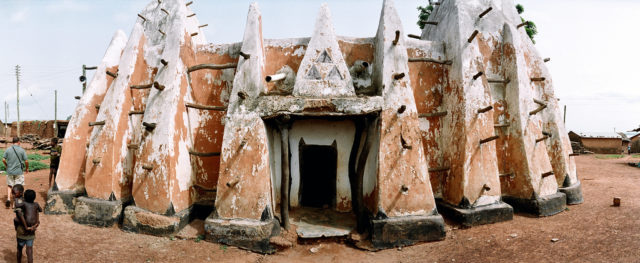
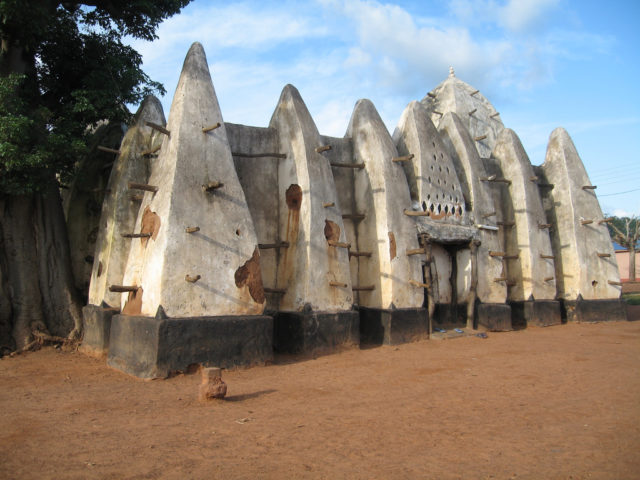
The Mosque has undergone restoration several times since it was originally founded. After an inappropriate restoration in the 1970s, the Larabanga Mosque was declared a World Heritage site in 2001, and now is listed on the World Monuments Fund’s list of “100 Most Endangered Sites”.
